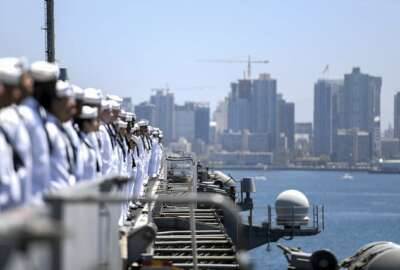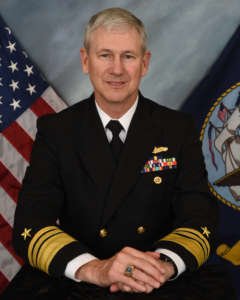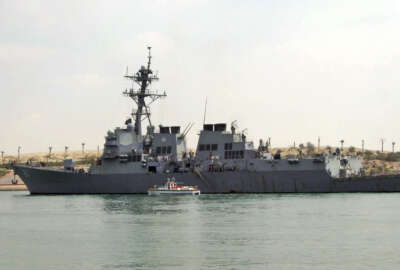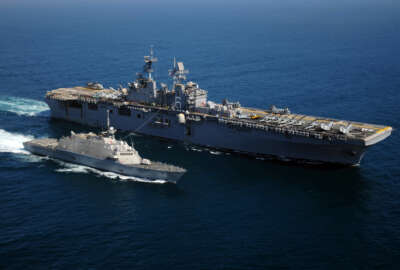 Exclusive
Exclusive Navy can’t build fast enough to reach 355 in time. So how will it get there?
The Navy is exploring certain ways to speed up the process of building new ships, but it's going to have to extend the lives of ships it currently has to reach a...
As the Navy pursues its goal of a 355-ship fleet, it’s becoming clear that the service is going to have to employ multiple methods to get there. Vice Admiral Thomas J. Moore, commander of Naval Sea Systems Command, said there’s been progress, and the shipbuilding schedule is being accelerated, but it won’t be enough.
“What we found was that the industrial base today, it’s fantastic but it’s smaller than it used to be,” Moore said on Agency in Focus: Navy. “And our ability to ramp up quickly to get to 355, you could not get to 355 alone in a timeframe that was acceptable to Congress just by building new ships. In fact, our initial estimate was that it would take until about 2052 if you were just going to build new ships, and increase the pace that you could build them.”
Can we build faster?

However, the Navy is exploring certain ways to speed up the process of building new ships. For example, it awarded five design contracts for a new class of frigates earlier this year, but it’s also considering some foreign designs, which would cut down the total time it takes to get the ships operational. It’s also planning to begin ordering more ships at a time, to take advantage of the economy of scale.
Moore told the Federal Drive with Tom Temin that NAVSEA is considering purchasing two aircraft carriers at once from the Newport News shipyards. Recently, the Navy has built one every six or seven years. By ordering two at once, it hopes to bring that down to about 4 years per ship.
And there’s precedent for that. Moore said the carriers Abraham Lincoln and George Washington were purchased together, as were the Harry S. Truman and the John C. Stennis. Not only were the shipbuilders able to buy all the materials, the radars, and the weapon systems for both ships at once, but they got more proficient at building them as well. Moore said five aircraft carriers were delivered in 17 years, or one every 3.4 years, using this method. In contrast, the George H. W. Bush and the Gerald Ford, ordered separately, took about nine years total to build.
Making them last longer
But even if the Navy did this with all its upcoming ships, it still can’t get to 355 quick enough. So it’s looking at extending the lifecycles of the ships it currently has. But it’s not just a question of scrubbing off the rust and sending them back out.
Moore said when he first joined the Navy, he served on Adams and Spruance class destroyers. Those were retired after 25-30 years, but not because they were old or broken down. It was because the weapons systems on those classes of ships couldn’t pace the threats they had to face.
Contrast that with the Arleigh-Burke class destroyer. First commissioned almost 30 years ago, they’re still heavily in use today, and more are being built. In fact, Moore said they’re the country’s primary ballistic missile defense platform. No one expected that in the early 1990s, but vertical launch technology, open architecture and the Aegis combat system made it possible to upgrade the weapons systems.
Moore said the service is currently looking at its destroyers, its amphibious assault ships, and its Littoral Combat ships to see if their service lives can be extended. Destroyers usually last 35 years, as do amphibious ships. The Littoral Combat Ships are designed to last 25. Moore said the Navy can bring those up to 45 and 35, respectively.
“Those ships are still combat relevant, so then it comes down to are you willing to do the maintenance, and the answer is ‘sure.’ We know how to do that, we’ve already proved we can keep an aircraft carrier for 50 years,” Moore said.
Copyright © 2025 Federal News Network. All rights reserved. This website is not intended for users located within the European Economic Area.
Daisy Thornton is Federal News Network’s digital managing editor. In addition to her editing responsibilities, she covers federal management, workforce and technology issues. She is also the commentary editor; email her your letters to the editor and pitches for contributed bylines.
Follow @dthorntonWFED





